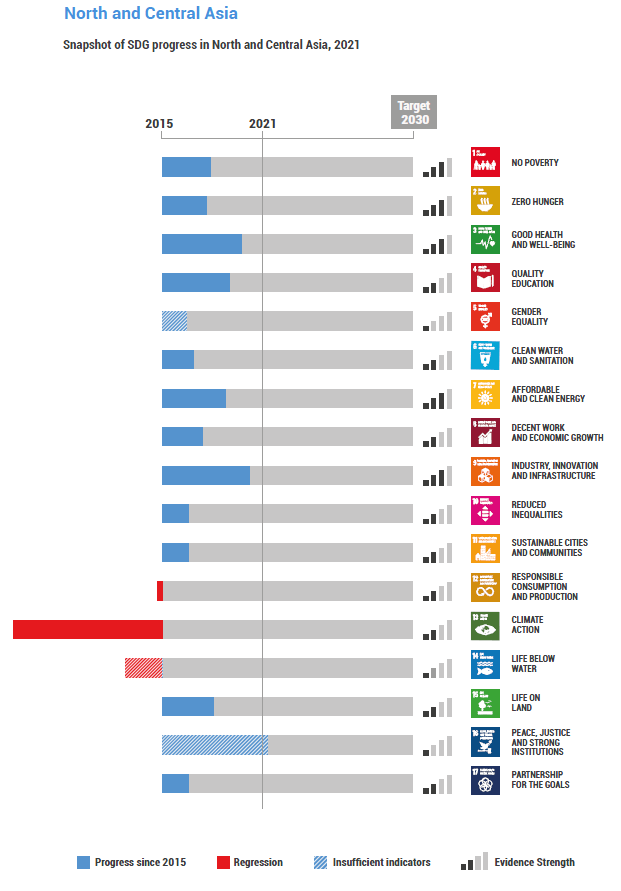
Section 12. Thematic reviews
12.2. Sustainable Development Goals: Tracking the Progress
In this Subsection we present an overview of SDGs progress based on the ESCAP “Asia and the Pacific SDG Progress Report 2022. Widening disparities amid COVID-19”. This Report provides an analysis of progress on 17 SDGs and 169 targets in the region and in each of the five subregions, including Central Asia. The report also provides an analysis of data gaps that prevent the monitoring of progress, and it provides an investigation of sources and priority areas for enhancing SDG data availability.
Progress towards the SDGs in the Asia-Pacific region has slowed as the COVID-19 pandemic and climate change have exacerbated development challenges. The North and Central Asia subregion is not on track for any of the goals, but progress has been made towards most of the measurable targets under good health and well-being (Goal 3), industry, innovation and infrastructure (Goal 9) and peace, justice and strong institutions (Goal 16). Meanwhile trends on responsible consumption and production (Goal 12), climate action (Goal 13) and life below water (Goal 14) have continued to regress for the past five years. Progress has been limited for clean water and sanitation (Goal 6), sustainable cities and communities (Goal 11), and life on land (Goal 15).
GHG emissions per capita in North and Central Asia are among the highest. Although renewable energy capacity has increased, the share of renewable energy in the total energy supply remains very low, amounting to approximately 3.4 per cent of the total energy supply. Fossil fuel subsidies as a percentage of GDP in North and Central Asia are higher than in any other subregion, at 12.1 per cent in Kyrgyzstan, 6.9 per cent in Turkmenistan and 4.4 per cent in Uzbekistan. North and Central Asia needs to prioritize improvements in production efficiency alongside increased production capacity to ensure the sustainability of lifestyles and natural resources.
Source: UNESCAP

